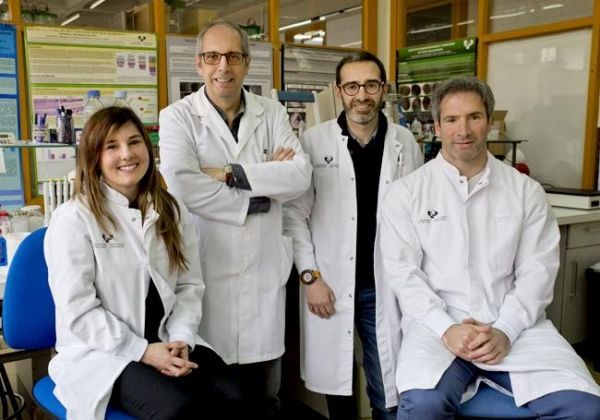Metastasis is the process whereby a tumour that grows in one organ breaks away from it and travels to another organ and colonises it. In the colonisation process it needs to create new blood vessels through which the cancer cells obtain the nutrients and oxygen they need to grow. This blood vessel formation process is called angiogenesis and is carried out by the endothelial cells. "Unlike normal endothelial cells and due to the signals, that reach them from the tumour cells, the cells that supply the tumours have increased growth and tend to move towards the metastatic mass to help it grow,” said Iker Badiola, member of the Signaling Lab research group in the Department of Cell Biology and Histology of the UPV/EHU’s Faculty of Medicine and Pharmacy.
In order to find out what is actually causing this change in the endothelial cells, the UPV/EHU’s Signaling Lab Research Group and the Department of Pharmacology, Pharmacy and Pharmaceutical Technology of the University of Santiago de Compostela, in collaboration with other groups of researchers, embarked on research using mice. The ultimate aim was, as Badiola pointed out, “to slow down the metastatic process by impacting on angiogenesis in the event of bringing about the restoration of the endothelial cells”. In the research they induced liver metastasis in mice by using colon cancer cells and from the mass they extracted endothelial cells. They then compared these endothelial cells with other healthy ones. The comparison made covered two aspects: on a protein level, in which they saw which proteins appeared and which did not in each cell type, and to what degree they did so, and in the same way with respect to the degree of micro–RNA. Micro-RNA consists of small elements which for some time were not thought to perform any function, but which are now known to play a role in protein regulation.
Using Biocomputing tools, they screened and selected the proteins and relevant micro-RNA elements, and “in the final step in this selection process we ended up with a specific micro-RNA: miR-20a. This is an element that appears in healthy endothelial cells but disappears in those that are in contact with the tumour. We saw that due to the disappearance of the miR-20a in the endothelial cells, a set of proteins appeared and that was when their behaviour began to change and they started to grow and move around,” explained Badiola.
Read more at University of the Basque Country
Image: The researchers from left to right: Joana Márquez, Fernando Unda, Iker Badiola abd Gaskon Ibarretxe. CREDIT: UPV / EHU


